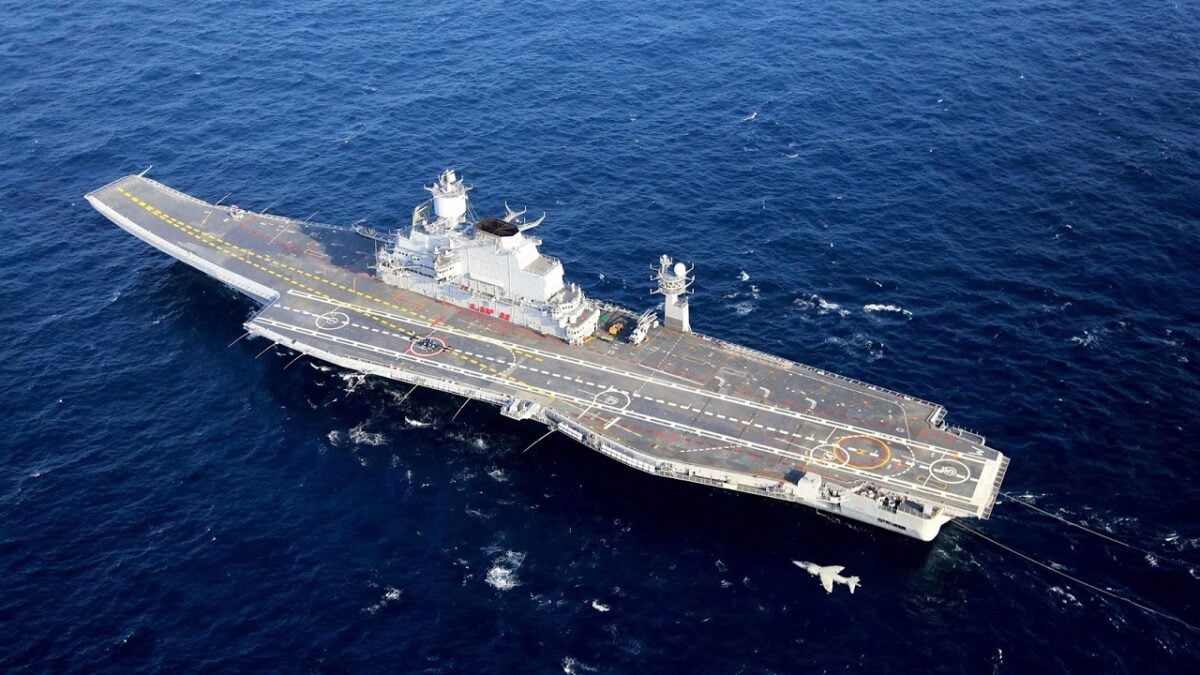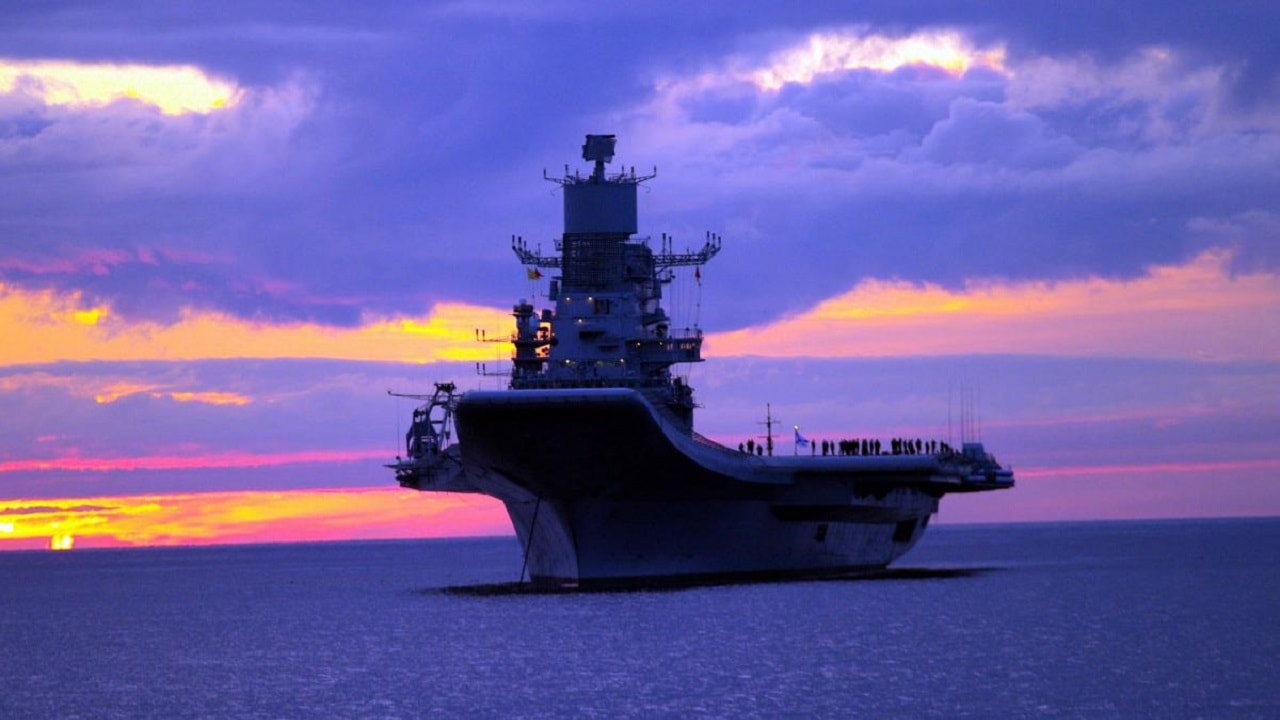Following the collapse of the Soviet Union, the Russian Navy had lots of equipment on its hands which it didn’t have the finances or resources to maintain. To India, this seemed like a perfect opening to buy a new aircraft carrier, and to Russia, a chance to offload equipment it could not maintain. However, the acquisition of the Admiral Gorshkov, which India later renamed the INS Vikramaditya, would prove to be more trouble than it was worth.
The History of the Soviet Union’s Kiev- and Baku-Class Aircraft Carriers
As the sole representative of the Baku subclass of the Soviet-designed Kiev-class carriers, the Admiral Gorshkov was the final example of the wider class to be built, entering service in 1987 in its own subclass, the Baku class. Initially known as the Baku, this final example of the Kiev class of heavy aircraft cruisers (as the ships were officially classified by the Soviets) was preceded by the Kiev, Minsk, and Novorossiysk.
The class itself was officially known as the Project 1143 Krechyet to the Soviets, while the Kiev- and Baku-class designations were Western designations. Developed to counter increasingly advanced American nuclear submarines, the Kiev class was intended as a replacement for the Moskva class.
How did the Transfer to the Indian Navy Go Awry?
Soon after the collapse of the Soviet Union, Indian negotiators went to work trying to acquire the then-Admiral Gorshkov for New Delhi, which would later become the flagship of the Indian Navy after it was recommissioned.
Despite the fact that the future Vikramaditya had been decommissioned in 1996 by the Russian Navy following a 1994 boiler fire, the Indian Navy nonetheless was purchased by India for $2.35 billion in 2004 along with 45 MiG-29K carrier-based fighter aircraft.
The task of refitting and refurbishing the new Vikramaditya was contracted out to the major Russian naval shipyard Sevmash, who in many ways can be seen as having mismanaged the project.
Plagued by cost and timeline overruns as well as workplace fatalities, the project of refitting the Vikramaditya undoubtedly proved to be a significant headache for the Indian Navy.
New Delhi spent years in negotiations with Sevmash and Russia over the price of the carrier’s refit, which placed some stress on the wider relationship between Russia and India.
Even after the original contract was signed, Russian authorities attempted to renegotiate the terms of the contract. New terms were not agreed upon until early 2010, six years after the original agreement was reached. The ship would not complete its refit until 2014, when it was accepted into the Russian Navy.
Despite these major issues, India decided that year to award Sevmash with an extension of the warranty service period.
What is the INS Vikramaditya Capable of?
While the Vikramaditya retains many basic features of its original configuration as the Admiral Gorshkov, it is in many ways very different from its old self.
While the cruiser-inspired section of the Kiev class was designed to employ a variety of ground-to-ground missiles, surface-to-air missiles, close-up defense systems, and anti-submarine rockets, the refitted Vikramaditya in Indian service had these removed or replaced with Indian-produced equivalents to accommodate an expanded flight deck in order to make the ship into a short take-off but assisted recovery (STOBAR) carrier.
In keeping with this evolution, the INS Vikramaditya does not employ the Yak-38 VTOL fighters that the Soviet Kiev-class carriers did, instead operating MiG-29K and MiG-29KUB fighters, which are fixed-wing variants of the MiG-29 designed for carrier operations. To support its MiG-29K contingent, the Vikramaditya carries advanced launch and recovery, radar, and electronic warfare systems. Its helicopter contingent is made up of ten Kamov Ka-31 AEW&C or Kam Ka-28 ASW helicopters, harkening back to the Kiev carriers’ original anti-submarine role.
The INS Vikramaditya is Particularly Accident-Prone
Over the course of its refurbishment and service life, the INS Vikramaditya has experienced several major mishaps, some of which were deadly.
In 2016, a gas leak emanating from the ship’s sewage system killed two individuals working on the ship. A 2019 fire on board the ship claimed the life of an officer who was leading firefighting efforts against the conflagration which broke out as the carrier was pulling to port. Most recently, the ship suffered another fire in May 2021. However, no casualties were reported in this fire.
While India’s Navy was eventually able to finally get their hands on the aircraft carrier they had paid dearly for in time, money, and patience, the difficulty in acquiring the INS Vikramaditya from Russia likely left New Delhi hesitant to try sourcing its carriers from other navies in the future.

INS Vikramaditya (R33) with a Sea Harrier.

The Vikramaditya at anchor in the White Sea (Off Russia).
With the Indian Navy about to receive the INS Vikrant, its first domestically built aircraft carrier, it seems that India has resolved to not leave the development of its navy entirely in the hands of foreign shipyards like Sevmash.
Wesley Culp is a Research Fellow at the Center for the Study of the Presidency and Congress. He regularly writes on Russian and Eurasian leadership and national security topics and has been published in The Hill as well as in the Diplomatic Courier. He can be found on Twitter @WesleyJCulp.

